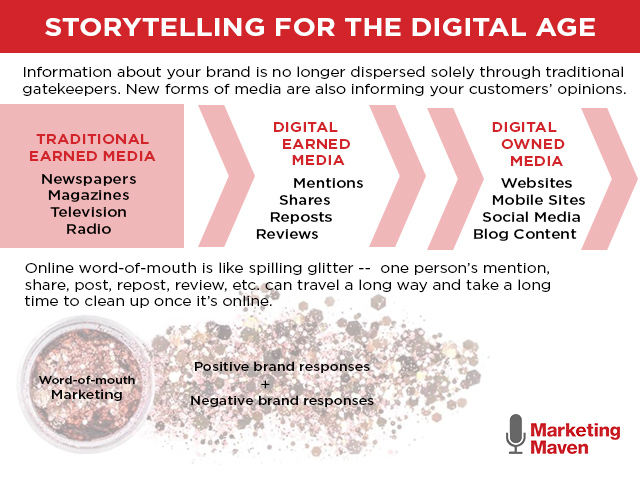Storytelling is the marketer’s tried and true method to captivate the audience’s attention and interest. Despite the primary medium for marketing shifting online during the past decade, this digital age brings more opportunities for brand storytelling than to what first meets the eye.
As the internet presents a space that is relatively infinite, it is first important to know that brands are no longer restricted to traditional mediums of print and broadcast alone. Online, a brand’s marketing campaign sees virtually no bounds and brands are now only limited by their own marketing creativity.
Although this sounds promising at first, there’s one major caveat in trying to understand the scope of reaching the online world: Our attention is divided. Despite Americans averaging 3 hours on their smart devices a day, our attention and activities online are constantly being pulled in many different directions, shortening our attention spans as a result. Adding to the online competition, individuals now set their own respective filters and choose what they want to give their attention to and what they care about. With the prospective consumer base now at constant ends with their own attention spans, how can we as marketers continue to captivate an audience with our storytelling?
The answer lies in a very old method of marketing: Word of mouth through brand integrity. When a brand earns and maintains integrity, the likeliness of their loyal customers spreading the word to their friends, family, and other prospective consumers is much higher.
This act is much more valuable than it was 10 years ago due to the rise of social media. For example, when someone uses Facebook or Twitter to talk about a product or brand, they broadcast it to their own individual audiences, possibly shaping other people’s view or interest on said brand as a result. Therefore, it’s important for brands to not only sell a great product, but to also keep up a coherent, interesting, and respectable image both online and in public to maintain positive word of mouth. Simple steps to achieve this would be to create a unique online ad campaign for a new product release. If said marketing campaign is creative enough to captivate a new audience, especially through humor or audio/visual appeal, they are more than likely to talk about it and share it with more people.
Once the attention of the online audience is earned, we can return to our proven method of marketing through storytelling. The brand narrative not only makes people believe in a product or service but believe in the brand and its story as well, becoming an important core aspect to branding. Telling a story through advertisements has always been a surefire way to capture attention, and thanks to new mediums such as social media, there are plenty more creative ways to go about this.
One effective method that brands have been focusing on is the use of Instagram Stories. With its short runtime of 15 seconds per post, Instagram Stories are a great tool to help get brand information out to the public, especially for those people who are only jumping on their device for a few minutes at a time. Marketers and PR teams can use Instagram Stories to showcase events, new products, or anything in short spurts of time to help humanize brands.
However, Instagram Stories, like Snapchat, only save posts for 24 hours. While there are ways to catalog your previous posts, most often than not, anything shared to these limited time mediums are only effective for the 24 hours that they’re live, hindering a campaign’s effectiveness. This justifies the need to post social content across multiple different platforms such as Twitter and YouTube. Not only does Twitter and YouTube save your posts indefinitely, but it also increases your reach across potential audiences as some people might only use one platform or the other. By telling an authentic story on popular social platforms, marketers can increase the influence and reach their brands have, resulting in higher interest and profits for their products.
Other mediums that provide space for brands to market their stories and products are in digital audio platforms such as Spotify, Pandora, and podcasting. While Spotify only plays ads for their free users, companies can benefit from advertising with Spotify due to their demographic-based targeting, allowing them to reach more niche audiences. Advertising with podcasts acts as a more influencer-based form of marketing, as ad-reads from podcast hosts directly taps into the host-to-listener relationship. By telling your brand’s story on a podcast with a dedicated listener base, marketers use the already established trust between the host and their audience to endorse products and services.
Although the model of marketing has shifted drastically in the last decade, it doesn’t mean marketers have to kick tried and true methods out the window. As the attention of the public at large has generally moved to the online space, it’s up to the brand and marketing team to adapt in order to help companies reach their goals. By maintaining brand integrity, telling a genuine and compelling story, and overall, staying on top of social trends to maximize reach and interest, marketing during the digital age can generate more favorable and measurable outcomes.

